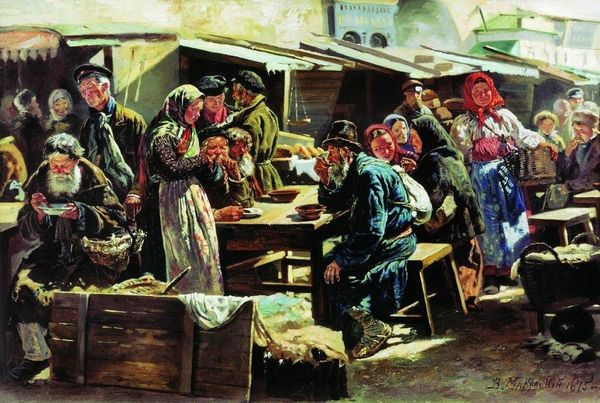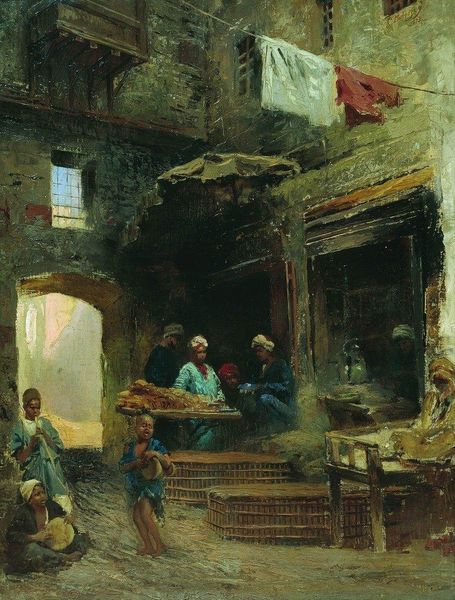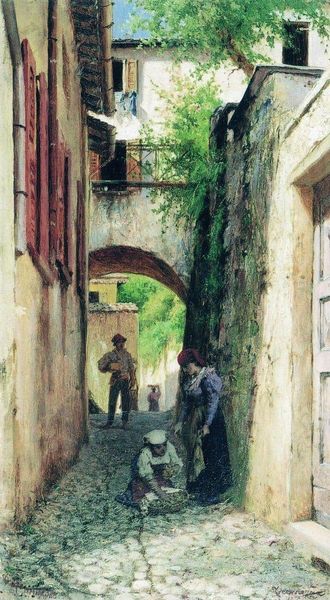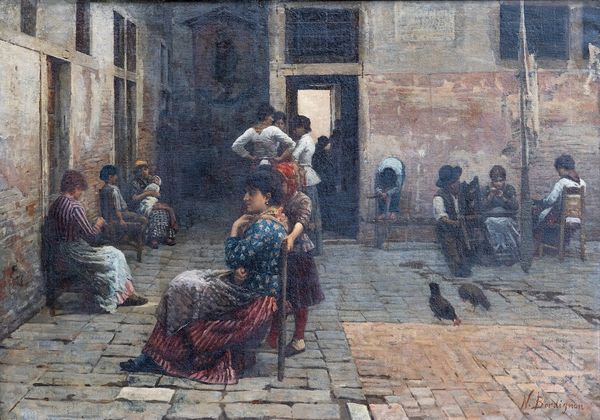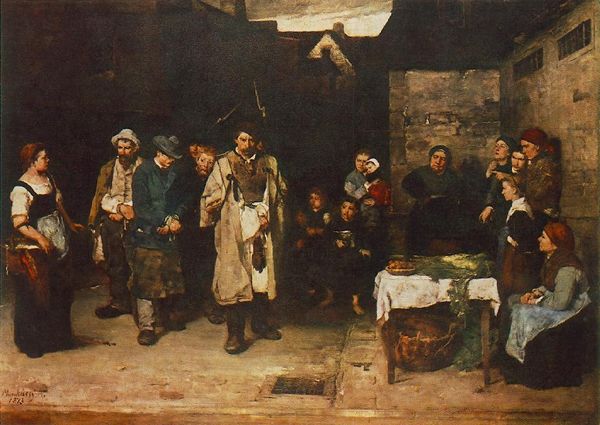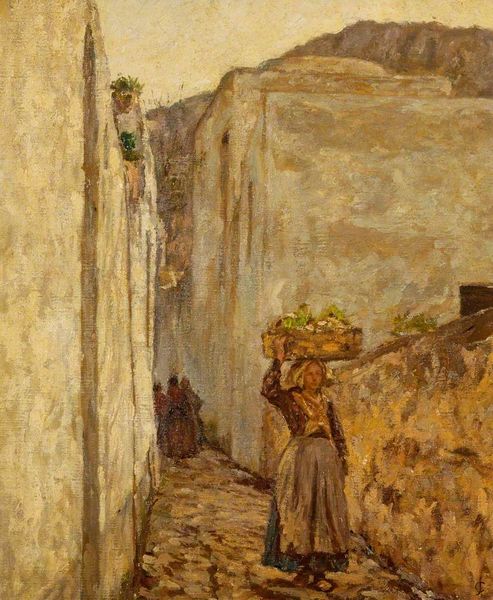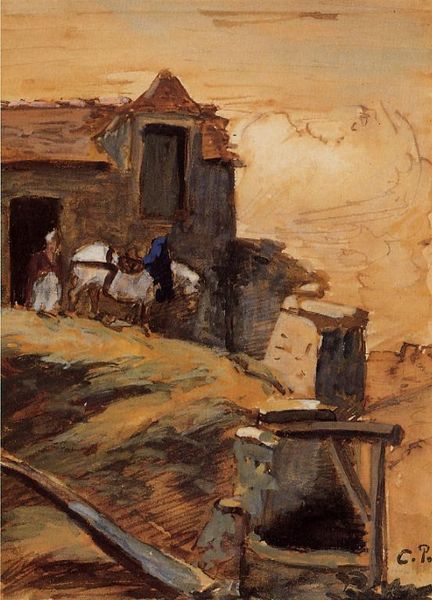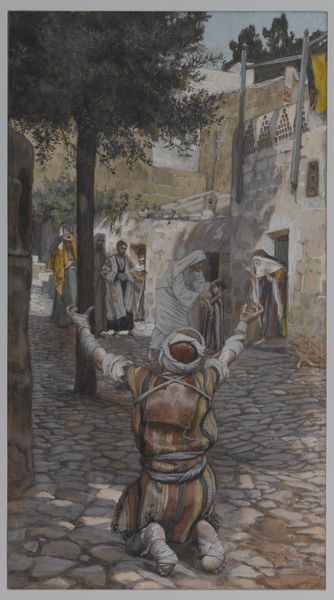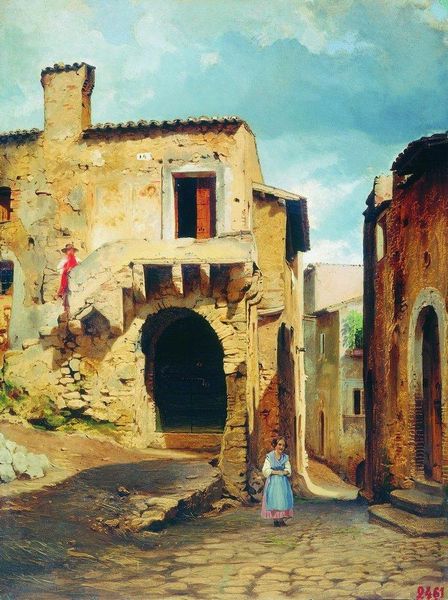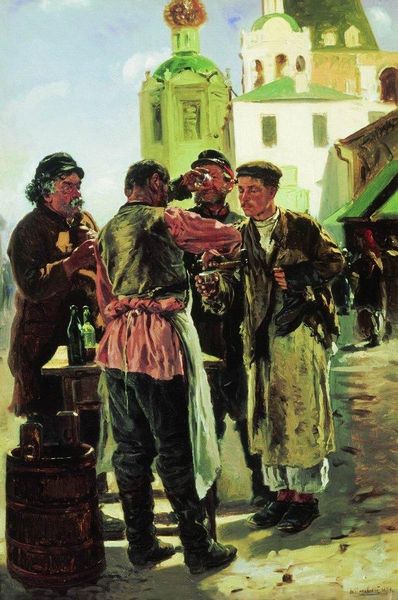
painting, plein-air, oil-paint
#
public art
#
painting
#
impressionism
#
plein-air
#
oil-paint
#
street shot
#
landscape
#
street-photography
#
oil painting
#
street photography
#
cityscape
#
genre-painting
#
italian-renaissance
#
realism
Copyright: Public domain
Editor: Telemaco Signorini’s "Chiacchiere a Riomaggiore," an oil painting done in the plein-air style, depicts a street scene bustling with life. It feels incredibly grounded and intimate, like a snapshot of everyday life. What resonates most strongly with you in this piece? Curator: The arrangement of figures calls to mind Renaissance frescoes, doesn't it? Groups of people populate the space, each absorbed in their own worlds, a testament to the social fabric of this Italian village. But what symbolic weight might this mundane setting carry? Is this work a kind of visual history? Editor: Visual history... that’s interesting. It does feel like a specific moment frozen in time. Are you saying that even something that seems this… normal can tell a story about a culture? Curator: Precisely. Note how the architecture itself becomes a character; those aged walls, doorways, and cobblestones whisper of generations past. What do they signify? Do you sense a yearning for a past, or simply a documentation of a fleeting present? Editor: I think it’s both, actually. There’s a realness to the way people are dressed and posed – it doesn’t feel idealized – but the details you mentioned give it a sense of timelessness. Almost as if the daily activity is another layer of the village's very ancient character. Curator: See how Signorini anchors our collective memory to the visual cues embedded within the composition, a shared narrative we can all, in some ways, access and interpret. This genre scene almost echoes with a sense of lived history. What will future viewers make of our commonplace iconography, I wonder? Editor: That's fascinating. I'll never look at a simple street scene the same way again. Thanks for showing me all of those visual clues. Curator: My pleasure! There are many stories hidden within the imagery around us. We must learn to read them.
Comments
No comments
Be the first to comment and join the conversation on the ultimate creative platform.


